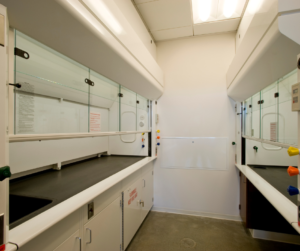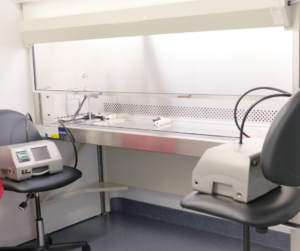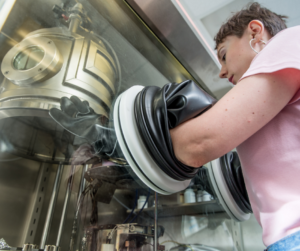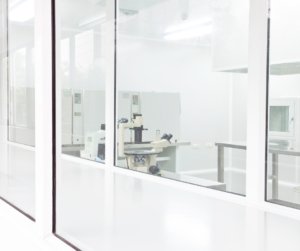Safety hood containment devices play a crucial role in various industries where the handling of hazardous materials and processes is involved. These specialized pieces of equipment are designed to create controlled environments that minimize the risk of exposure to dangerous substances, protect personnel, and maintain the integrity of the surrounding environment.
Definition and Purpose of Safety Hood Containment Devices
Safety hood containment devices, also known as containment hoods (not to be confused with safety hood personal protective equipment), are specialized pieces of equipment that are used to create controlled workspaces where hazardous materials or processes are handled. Their primary purpose is to contain and control potential risks, preventing the release of harmful agents into the environment and ensuring the safety of personnel. Safety hood containment devices are used in various industries, including chemical manufacturing, pharmaceuticals, biosafety, research laboratories, and more. They provide a physical barrier and controlled environment, reducing the potential for exposure and contamination.
Types of Safety Hood Containment Devices
There are several types of safety hood containment devices available, each tailored to specific applications and hazards. Here are some commonly used safety hood containment devices:

Fume Hoods
Fume hoods are containment devices designed to control and exhaust chemical fumes, vapors, and airborne particles generated during laboratory experiments or industrial processes. They consist of an enclosed workspace with a transparent front sash or window, allowing users to work while providing a physical barrier and containment. Fume hoods use an exhaust system to remove hazardous substances from the workspace, ensuring the protection of personnel and the environment.
Biological Safety Cabinets (BSCs)
Biological safety cabinets, or biosafety cabinets, are safety hood containment devices specifically designed for handling biological agents such as pathogens or genetically modified organisms. They provide a sealed and contained workspace with HEPA filters to prevent the release of biological materials into the laboratory or surrounding environment. BSCs are classified into different types (Class I, II, III) based on their level of containment and airflow configurations.
Glove Boxes
Glove boxes are sealed containment devices used for working with hazardous substances in controlled atmospheres. They consist of a transparent enclosure with built-in gloves, allowing users to manipulate samples or equipment within an isolated environment while maintaining containment and preventing exposure. Glove boxes are commonly used in industries such as pharmaceuticals, nuclear research, and electronics.
Cleanroom Hoods
Cleanroom hoods are containment devices used in cleanroom environments to maintain a controlled and sterile working area. They provide a filtered and controlled airflow to prevent contamination of sensitive processes or products. Cleanroom hoods are commonly used in industries such as pharmaceuticals, microelectronics, biotechnology, and healthcare.
Importance and Benefits of Safety Hood Containment Devices
Safety hood containment devices offer numerous benefits to industries where hazardous materials and processes are handled. Some key advantages include:
Hazard Containment
Safety hood containment devices prevent the release of hazardous substances, protecting both personnel and the environment from potential harm. By creating a controlled workspace, these devices significantly reduce the risk of exposure and contamination.
Personnel Safety
The primary focus of safety hood containment devices is to ensure the safety of personnel. They provide a physical barrier and controlled environment, minimizing the risk of inhalation, dermal contact, or other forms of exposure to hazardous materials

Environmental Protection
By containing hazardous substances, safety hood containment devices prevent their release into the surrounding environment. This helps in maintaining a clean and safe work environment and prevents pollution or contamination.
Compliance with Regulations
Safety hood containment devices are designed to meet specific regulatory standards and guidelines. Adhering to these regulations ensures that industries comply with safety requirements, protecting the health and well-being of personnel and maintaining legal compliance.
Process Control
The controlled environments provided by safety hood containment devices enable better control over processes involving hazardous materials. This allows for more precise experimentation, research, or manufacturing processes, leading to improved outcomes and quality.
Applications of Safety Hood Containment Devices

Safety hood containment devices find applications in various industries and settings. Some notable applications include:
Chemical Manufacturing
Safety hood containment devices are widely used in chemical manufacturing facilities to handle volatile chemicals, protect personnel from exposure, and control emissions.
Pharmaceuticals
In pharmaceutical laboratories and production facilities, safety hood containment devices are essential for handling active pharmaceutical ingredients (APIs), hazardous compounds, and maintaining sterility during formulation and manufacturing processes.
Biosafety and Research Laboratories
Biosafety cabinets and other safety hood containment devices are critical in biosafety and research laboratories for handling biological agents, pathogen research, genetic engineering, and other sensitive procedures.
Cleanrooms
Cleanroom hoods are utilized in industries such as microelectronics, pharmaceuticals, and biotechnology, where maintaining controlled environments free from contamination is critical.

Summary
Safety hood containment devices are essential tools that ensure the safe handling of hazardous materials, protect personnel, and maintain the integrity of the environment. By providing controlled workspaces, these devices significantly reduce the risk of exposure and contamination in various industries. Fume hoods, biological safety cabinets, glove boxes, and cleanroom hoods are just a few examples of safety hood containment devices used in different applications. Investing in and adhering to proper safety practices with these devices is crucial for the well-being of personnel, the protection of the environment, and regulatory compliance in hazardous material handling industries. Fisher American is a world leader in laboratory furnishings and laboratory fume hoods. If you have questions or need assistance choosing the right product for your laboratory, please don’t hesitate to contact us.


